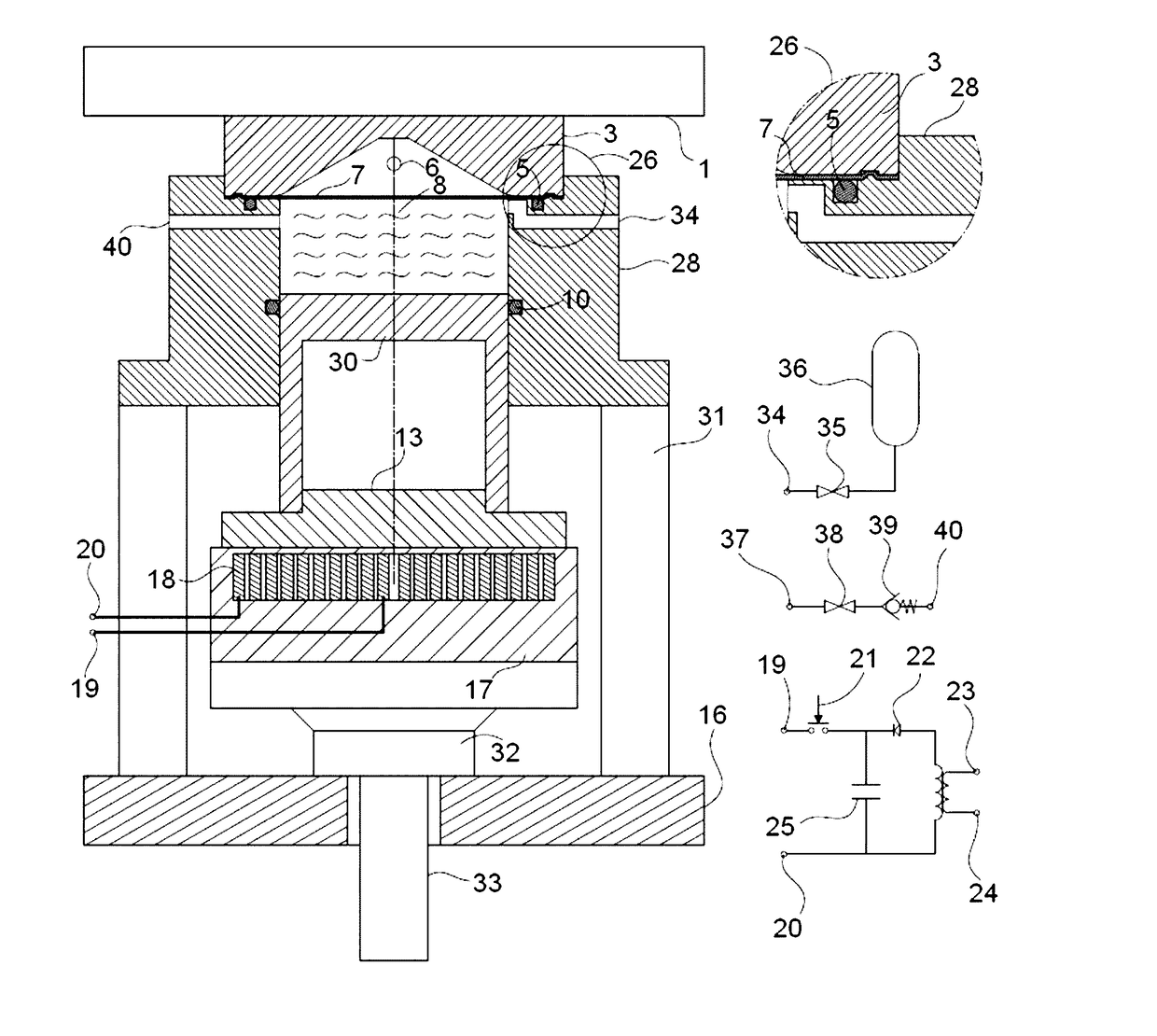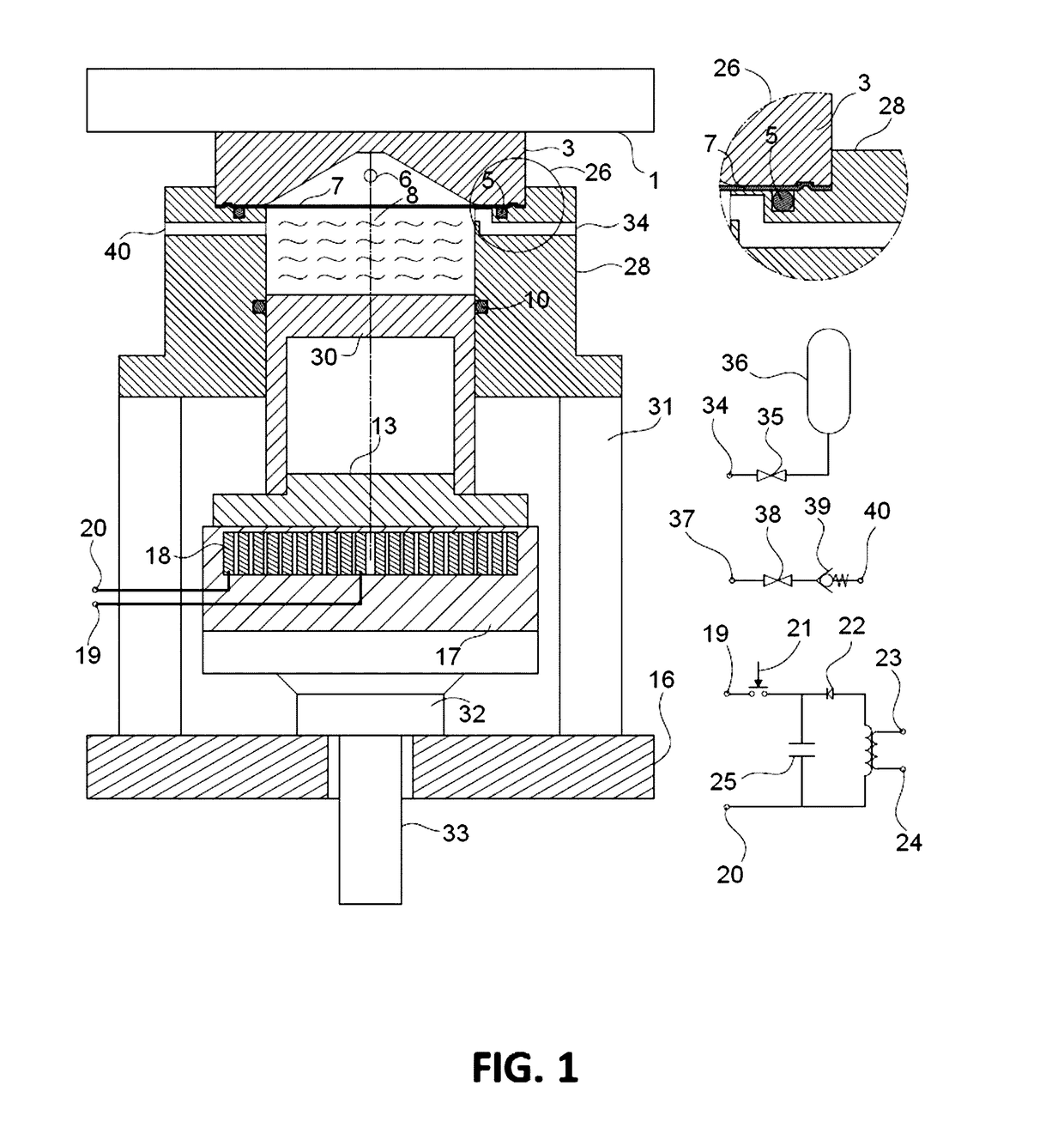High-speed hydraulic forming of metal and non-metal sheets using electromagnetic fields
a technology of electromagnetic fields and metal and non-metal sheets, which is applied in the direction of presses, manufacturing tools, presses, etc., can solve the problems of low formability, inability to use conventional forming methods to form these high-strength metals, and metals which are typically used in sheet form, so as to prevent fluid backflow, prevent fluid backflow, and prevent fluid backflow
- Summary
- Abstract
- Description
- Claims
- Application Information
AI Technical Summary
Benefits of technology
Problems solved by technology
Method used
Image
Examples
Embodiment Construction
[0022]In the following detailed description, numerous specific details are set forth by way of examples in order to provide a thorough understanding of the relevant teachings. However, it should be apparent to those skilled in the art that the present teachings may be practiced without such details. In other instances, well-known methods, procedures, components, and / or circuitry have been described at a relatively high-level, without detail, in order to avoid unnecessarily obscuring aspects of the present teachings.
[0023]Various industries such as automotive and aerospace industries use light-weight high strength material such as, for example, aluminum alloys and advanced high strength steels to reduce energy consumption and cost. These high strength materials have low formability and special forming method is needed to form sheets of the material into desired shapes. The forming methods used for such high strength materials aim at increasing the strain rate of the material, because...
PUM
| Property | Measurement | Unit |
|---|---|---|
| thickness | aaaaa | aaaaa |
| thickness | aaaaa | aaaaa |
| thickness | aaaaa | aaaaa |
Abstract
Description
Claims
Application Information
 Login to View More
Login to View More - R&D
- Intellectual Property
- Life Sciences
- Materials
- Tech Scout
- Unparalleled Data Quality
- Higher Quality Content
- 60% Fewer Hallucinations
Browse by: Latest US Patents, China's latest patents, Technical Efficacy Thesaurus, Application Domain, Technology Topic, Popular Technical Reports.
© 2025 PatSnap. All rights reserved.Legal|Privacy policy|Modern Slavery Act Transparency Statement|Sitemap|About US| Contact US: help@patsnap.com



